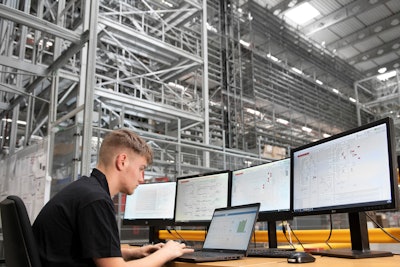
In considering what should companies be doing to achieve warehouse visibility and to protect their warehouses from future supply chain disruptions, the simple answer is to provide a list. There are plenty of products available that would make great solutions. And, there are plenty of vendors out there ready to provide them.
What should companies be doing to achieve warehouse visibility?
First, it’s important to acknowledge the importance of warehouse visibility. By maximizing the availability of data for your warehouse operation, you are empowered to make more informed decisions. To achieve this, you must effectively collect information in these key areas:
· Order forecast. This involves having a full understanding of and visibility into expected demand. What type of volumes will the warehouse be required to process? When will those volumes need to be processed? And, what is the driving factor behind the fluctuations in demand? A strong partnership between corporate planning resources and warehouse planners is a key relationship to develop.
· Inventory. It’s fairly obvious that warehouses should have visibility into all the inventory they have within their facility. But, true inventory visibility is understanding both what is on-hand and what is in-transit to the warehouse. Visibility for in-transit inventory should include knowing what is expected for inbound stocking as well as returns that are being processed (reverse logistics). Gaining a full picture of all inventory provides the complete data for decision making by warehouse managers.
- Order execution. This is knowing where orders are in the order fulfillment process. How is the warehouse progressing against its execution plan? Is the warehouse operation ahead or behind of its target? How should managers adjust operations to maintain (or exceed) the order execution plans?
Of course, collecting and managing all this data is a challenge in and of itself. Companies are looking to automation solutions for help. Warehouse automation that leverage Industrial Internet of Things (IIoT) technology and software tools for processing the data have become a baseline necessity for data management.
Still having the data and using it effectively are two different things. You should consider these best practices to ensure accuracy and efficiency:
- Develop a standard process to review forecasts with corporate and supply chain planning partners. This process should include a look forward (what is expected over the coming days/weeks/months), as well as a look backwards to understand how accurate the forecast was.
- Instill best-in-class inventory management process to ensure accurate inventory within the four walls of the warehouse. Additionally, develop tools that provide full visibility to inbound inventory, including capabilities to predict returned (reverse logistics) inventory.
- Set up a regular cadence to review operational execution.
What should companies be doing to protect their warehouse from future supply chain disruptions?
The Coronavirus disease (COVID-19) pandemic has clearly demonstrated what disruption on a grand scale can do to the supply chain. But, not all disruptions are pandemics — they can come in many shapes and forms. For example, an organization that had done its homework by building business continuity into its strategy with operations sites in both southwest Florida and Atlanta. The two sites allowed for a contingency plan in the case one site had issues. Unfortunately, the path that Hurricane Irma carved in 2017 scored a direct hit on both locations, putting both sites in a challenging situation.
So, yes, it is important to have a plan for disruptions you can predict. But, it is even more important to build flexibility and resiliency into your operation so you can react quickly to what you cannot predict.
Again, considering the COVID-19 pandemic, the companies with warehouses that were able to pivot quickly not only returned to profitability, but also built brand equity with their customers. Companies that execute during challenging times are rewarded with positive customer perception and awareness.
This is again why warehouse visibility is so important — having the systems in place that can provide data and react to disruption is what makes nimble, quick decisions possible.
In addition to warehouse visibility, here are some strategies to consider when preparing for disruptions:
· Implement systems that provide maximum visibility to data and information. Tie warehouse expectations to corporate forecasts. Gain full visibility to on-hand and in-transit inventory. Understand the detailed status of inventory.
· Implement automation capabilities within the warehouse that allow labor to be assigned to the most pressing needs of the business when disruption does happen.
· Leverage outside data, analyzing external factors that might impact your warehouse operations. These could include weather, logistics/delivery constraints, local regulations, labor implications and changes in competition for labor in the area (such as competitor warehouse coming online nearby).
· Use artificial intelligence (AI) as an engine to help your organization make decisions and prioritize.
· Have a playbook. Work through the different scenarios and have a plan for how to react to each of those different scenarios. Understand the risks associated with each scenario and how different reactions will impact your customers.
Conclusion
Doing more of the same is not the solution for preparing your warehouse for supply chain disruptions.
What your company needs is future-forward strategy to plan for what you know (and create the flexibility for what you don’t). Then you’ll be ready to implement the automation solutions to make that strategy work.













![Pros To Know 2026 [color]](https://img.sdcexec.com/mindful/acbm/workspaces/default/uploads/2025/08/prostoknow-2026-color.mduFvhpgMk.png?ar=16%3A9&auto=format%2Ccompress&bg=fff&fill-color=fff&fit=fill&h=135&q=70&w=240)


